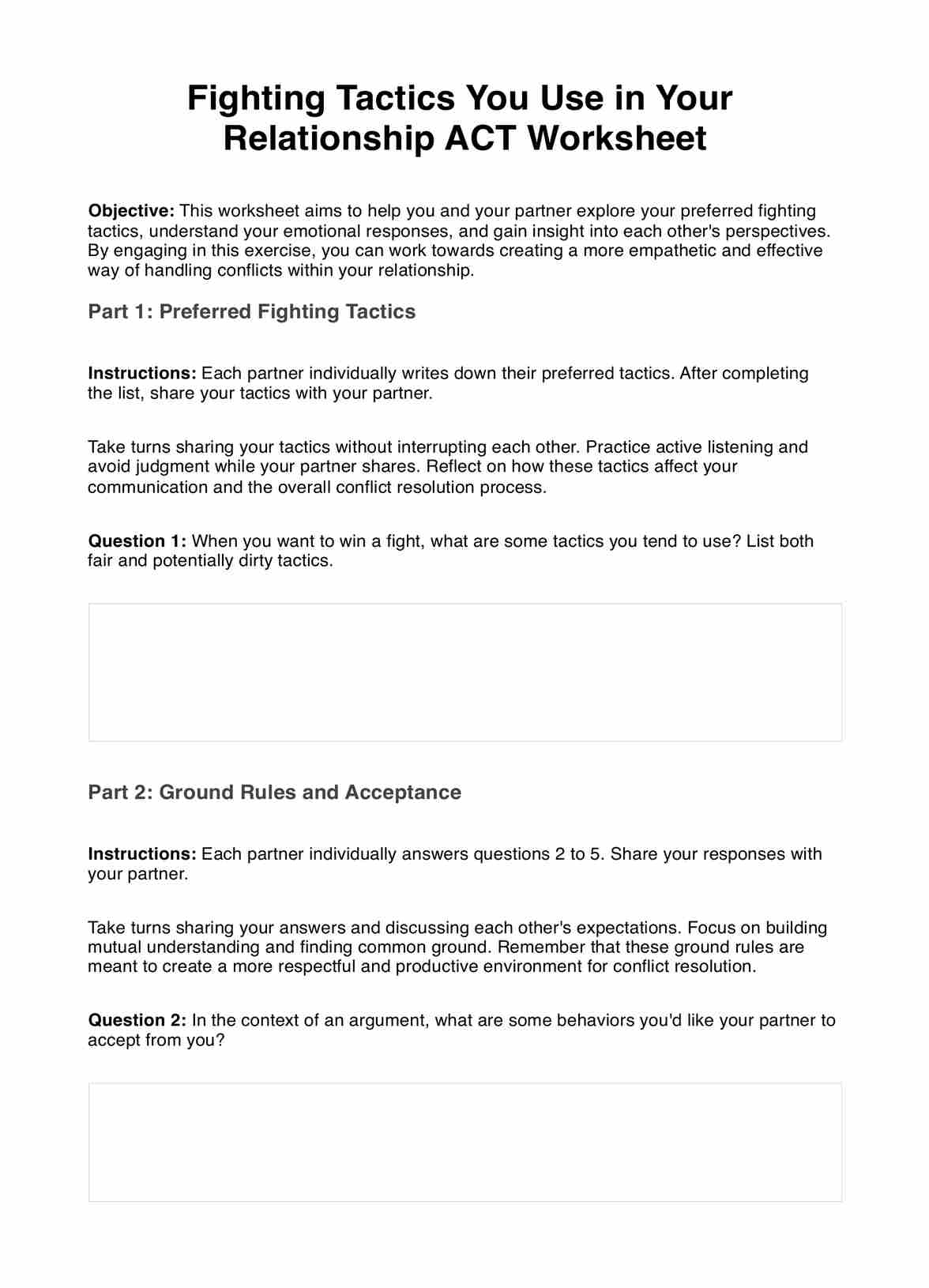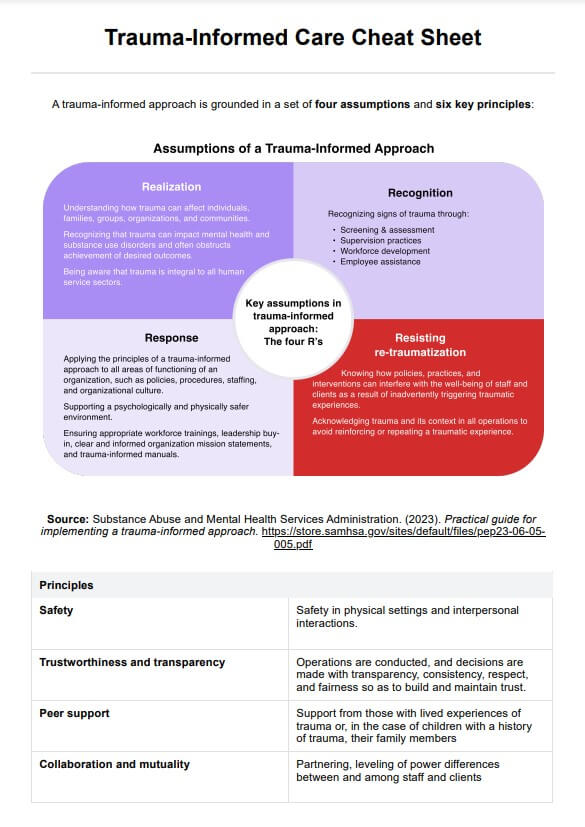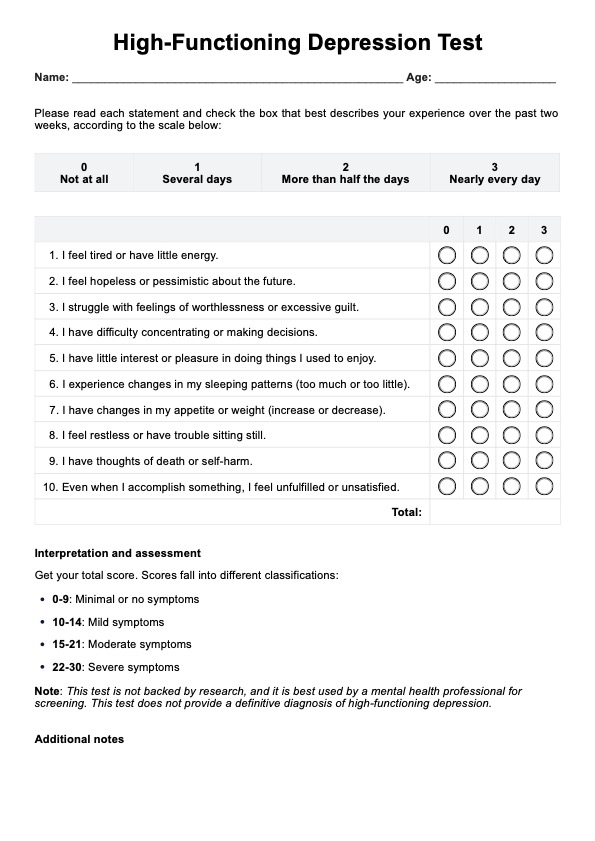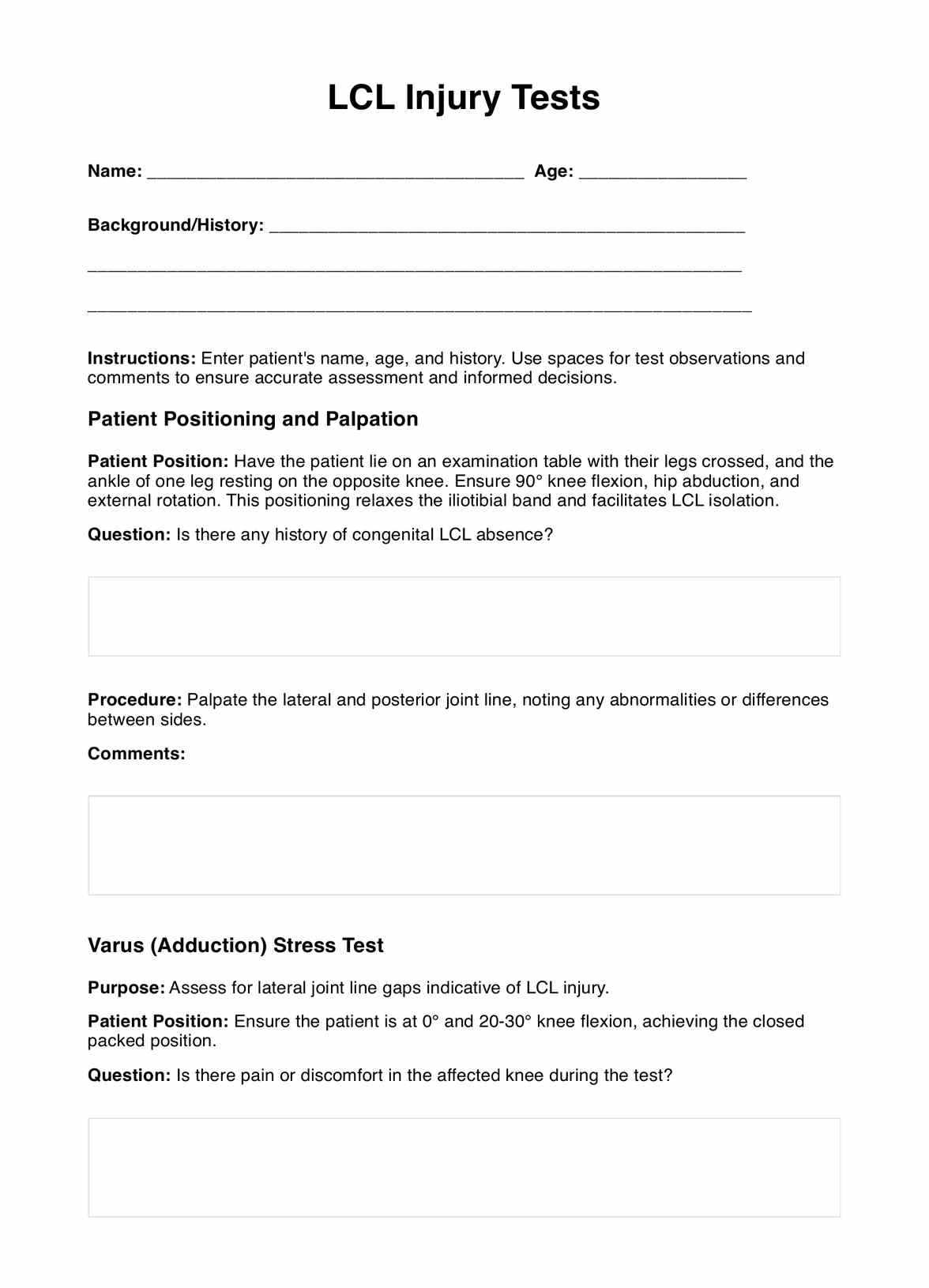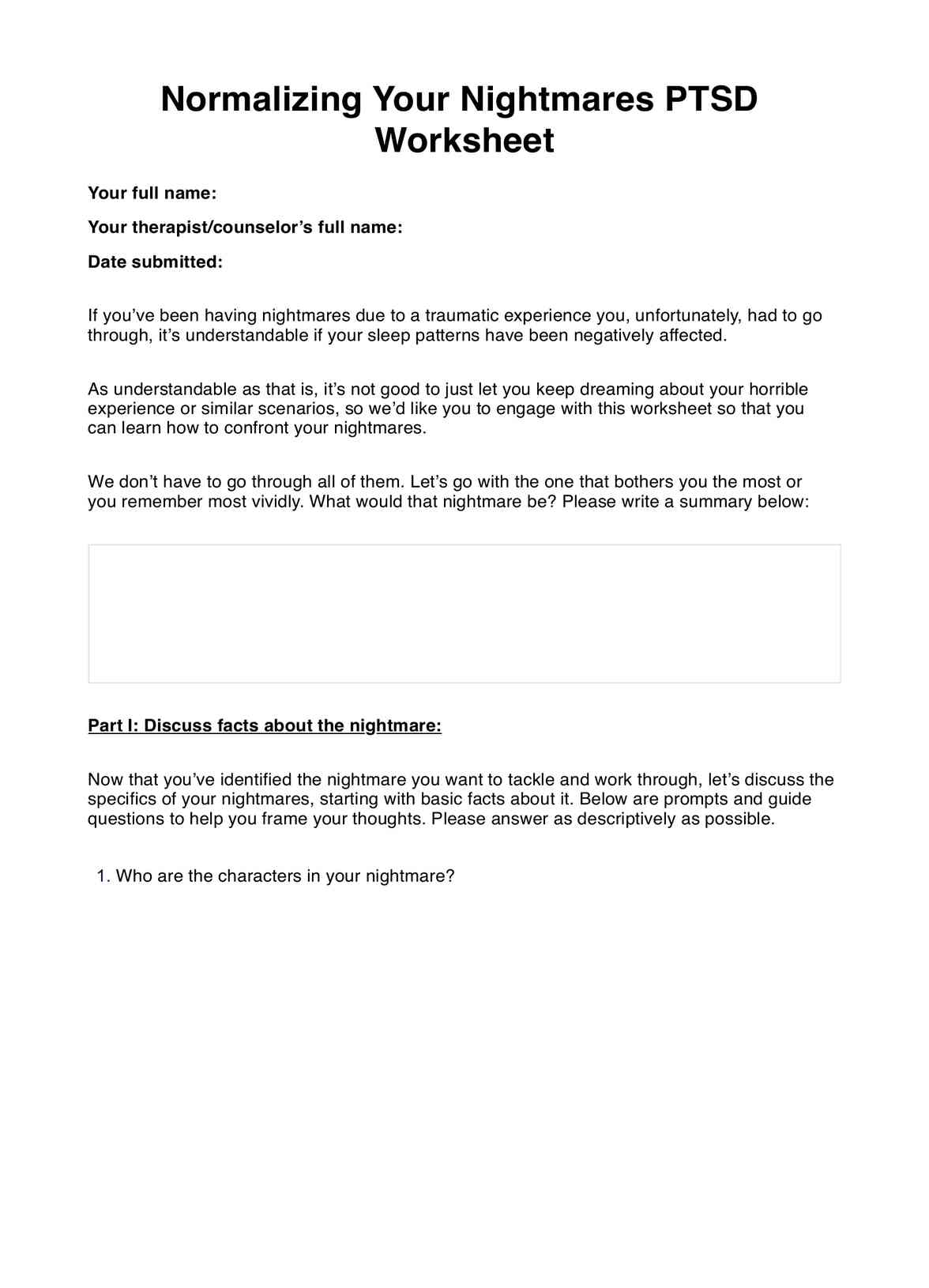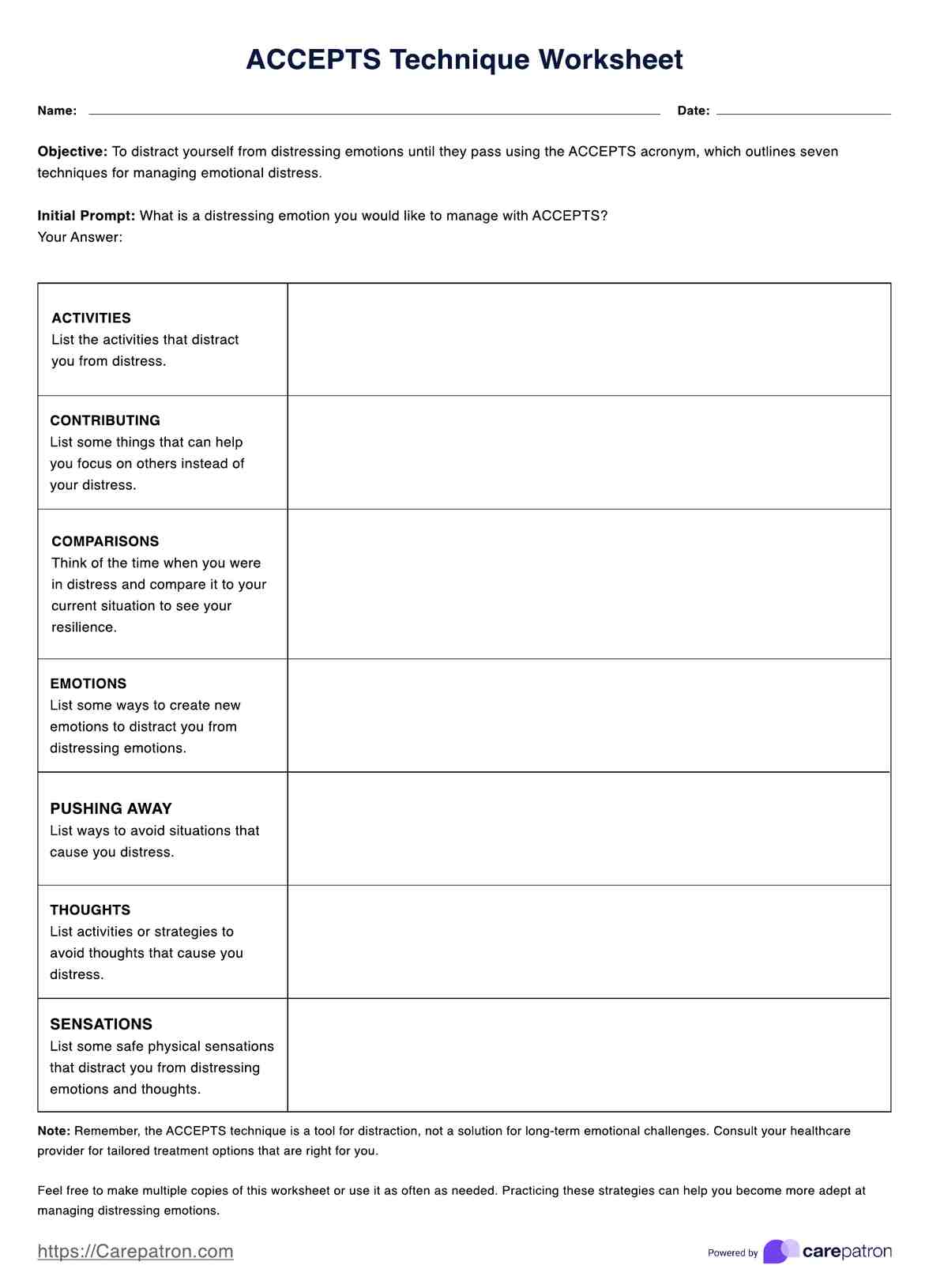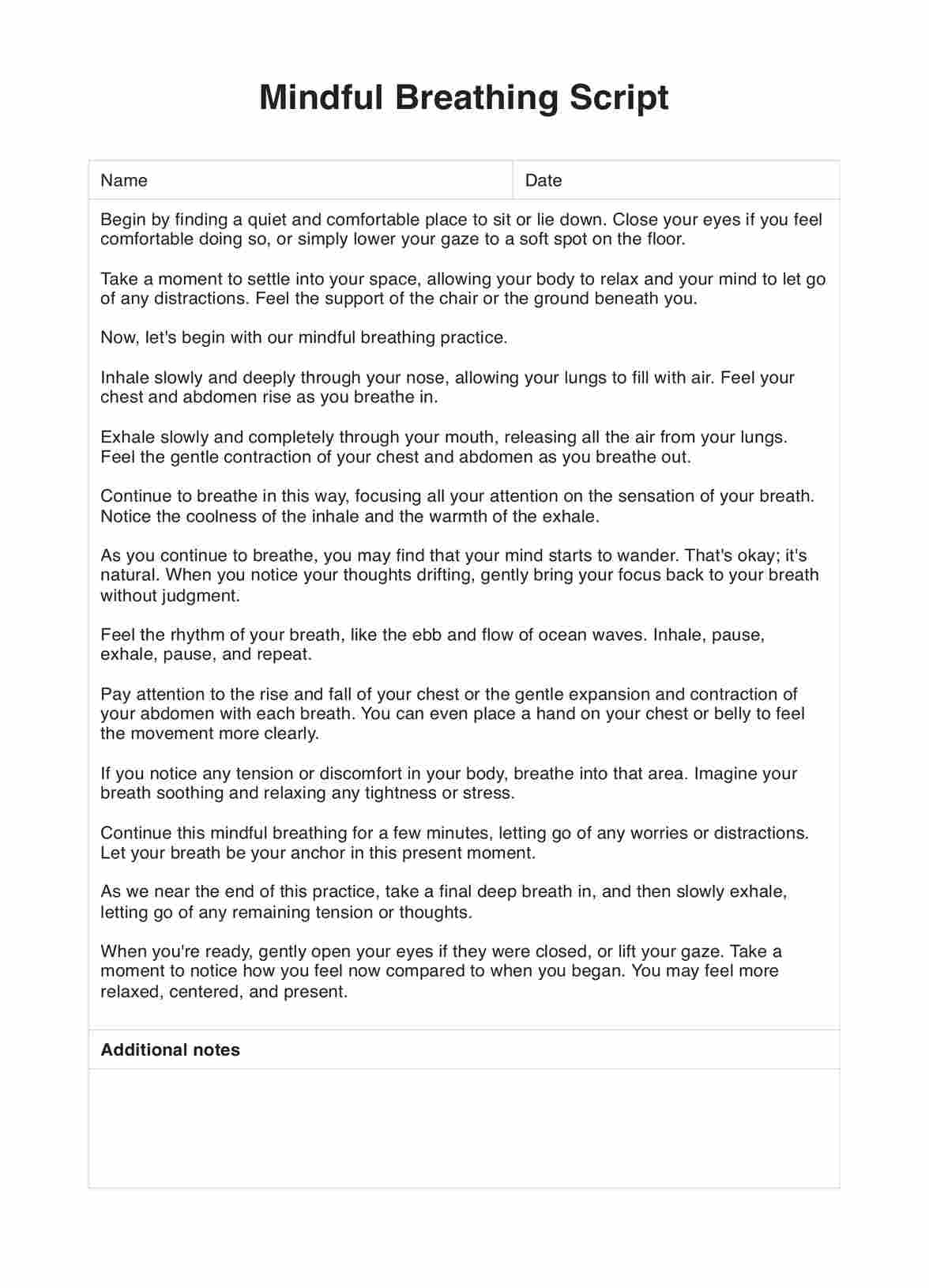Trauma Worksheets
Empower your clients to understand, identify, and effectively manage the various trauma triggers they encounter in their daily lives using our Trauma Worksheet.


What Is A Trauma Worksheet?
Sadly, as a mental health practitioner, you will undoubtedly come across clients with a history of personal trauma. Trauma can take many forms, from childhood neglect to chronic emotional or physical abuse, surviving a traumatic event will take its toll of anyone- regardless of their background.
But that’s where our specially designed can help. This worksheet is a digital PDF resource to help your clients identify the trauma triggers they encounter in their daily lives and develop a plan for either reducing the exposure to or learning to cope with these triggers.
This worksheet is designed to be a collaborative effort between you and your client to give them the tools they need to manage their daily lives and frequently encountered trauma triggers. Objectives of this worksheet include helping your client understand what triggers are, how they know if they have been triggered, and the sorts of things that are triggers for them.
Trauma Worksheets Template
Trauma Worksheets Example
How To Use This Worksheet For Trauma
It’s a big decision to seek out help with dealing with past trauma, so we’ve made this resource as simple as possible to aid your clients in this process. To start incorporating this trauma worksheet into your medical practice, just follow this step-by-step guide.
Step One. Download the Worksheet
The first step is to download a copy of this trauma worksheet. You can download the free PDF using the link on this page.
Step Two. Provide to your Client
Next, you will need to provide a copy of the worksheet to your client. You can send them a digital copy, as this PDF can be filled in completely digitally using the interactive textboxes, or if they prefer, you can print it out and provide them with a paper copy.
Step Three. Review the Worksheet and Offer Assistance
Once your client has completed as much of the worksheet as they are able, they may wish to discuss certain sections with you. The final table involves identifying ways to avoid, reduce exposure to, overcome, or cope with their five biggest triggers. This section will likely be where the most professional assistance is required.
Step Four. Store the Worksheet Securely
Finally, if your client chooses to share a copy of the worksheet with you, ensure you store it securely so it can be easily accessed in the future should you need to access this information again.
Who Can Use this Printable Trauma Worksheet (PDF)?
Helping people through personal trauma can be a hugely important, but difficult task. The process of trauma therapy can uncover previously buried memories that will undoubtedly be painful for your client to process, and as such, this Trauma Worksheet should be conducted in conjunction with a qualified Mental Health Professional. Examples of the kinds of professionals who may find this worksheet useful to incorporate into their practice include:
- Trauma psychologists
- Psychiatrists
- Clinical Social Workers
- Clinical Psychologists
- Mental Health Counselors
- Psychiatric or Mental Health Nurses
Why Is This Worksheet Useful For Therapists
Structure your Session
This worksheet can serve as a great discussion starter for your client’s sessions with you. Offering a worksheet your client can take away and think about between sessions is a great way to invite your client to participate in their own care, as well as provide a structure for the following session with you.
Get a Better Understanding of your Client
By completing this worksheet, you will get a much deeper understanding of your client’s day-to-day life and the mental challenges they face as a result of their past trauma. You’ll be able to empathize with your client, and they in turn will be able to feel understood and heard.
Work with your Client
This worksheet presents a great tool for collaborative work with your client. As their mental health practitioner, you’ll be able to guide them on coping skills or tips for overcoming certain triggers, whereas your client will be able to help you better understand their viewpoint.

Benefits of Trauma Worksheet Template
Catch triggers early
By analyzing their personal warning signs and body signals, your client will learn how to mindfully become aware that they have been triggered and move into self-care mode. This is a great skill to have, as too often, people suffering from trauma-related flashbacks realize too late that a situation could be potentially triggering.
Empower your Clients
This worksheet aims to provide your clients with the tools they need to cope with the triggers they encounter in their day-to-day lives. Having an understanding of their triggers, and a plan for how they can either avoid, overcome, or cope with each, empowers your client to take control of their recovery and become an equal partner in their mental health treatment.
Create a specific trigger plan for your client
After completing this worksheet, your client will have a tailor-made plan for their specific triggers. This is a hugely valuable resource compared to generic plans for people struggling with trauma-related flashbacks or mental health episodes.
Applicable for any Type of Trauma
This worksheet can be used for clients with or without any official mental health diagnosis. While clients who find this worksheet most useful will likely have been diagnosed with Post-Traumatic Stress Disorder (PTSD), it is not necessary for completing this worksheet. Similarly, the specific type of trauma is not important for completing this worksheet- and clients with any past history of trauma can utilize this resource.
Keep it Digital
Finally, a huge benefit of this worksheet is that it can be kept completely digital. This means your client can access it from their phone, laptop, or another device, whenever they need.
Commonly asked questions
This worksheet is designed to be completed, at least in part, in conjunction with your client’s primary mental health professional. It should be completed when they are in a calm mindset and have the headspace to think about their trauma triggers and recall times in the past they have been triggered. This should therefore be a supportive environment where your client feels safe, such as in a session with you.
Different people will have different coping skills that work for them, but some common strategies include breathing exercises, grounding techniques, distracting activities, engaging in a hobby, journaling, talking to a peer or family member, or leaving a situation.
Warning signs that someone has been triggered could include trouble breathing, sweating, chest or abdominal pain, sudden change in mood, anger, increased sensitivity to noise, light, or certain tastes or smells, feeling disconnected from the current time or place, or feeling scared or anxious. Again, these warning signs will differ from person to person so it’s important for your client to think about the signs that are specific to them.



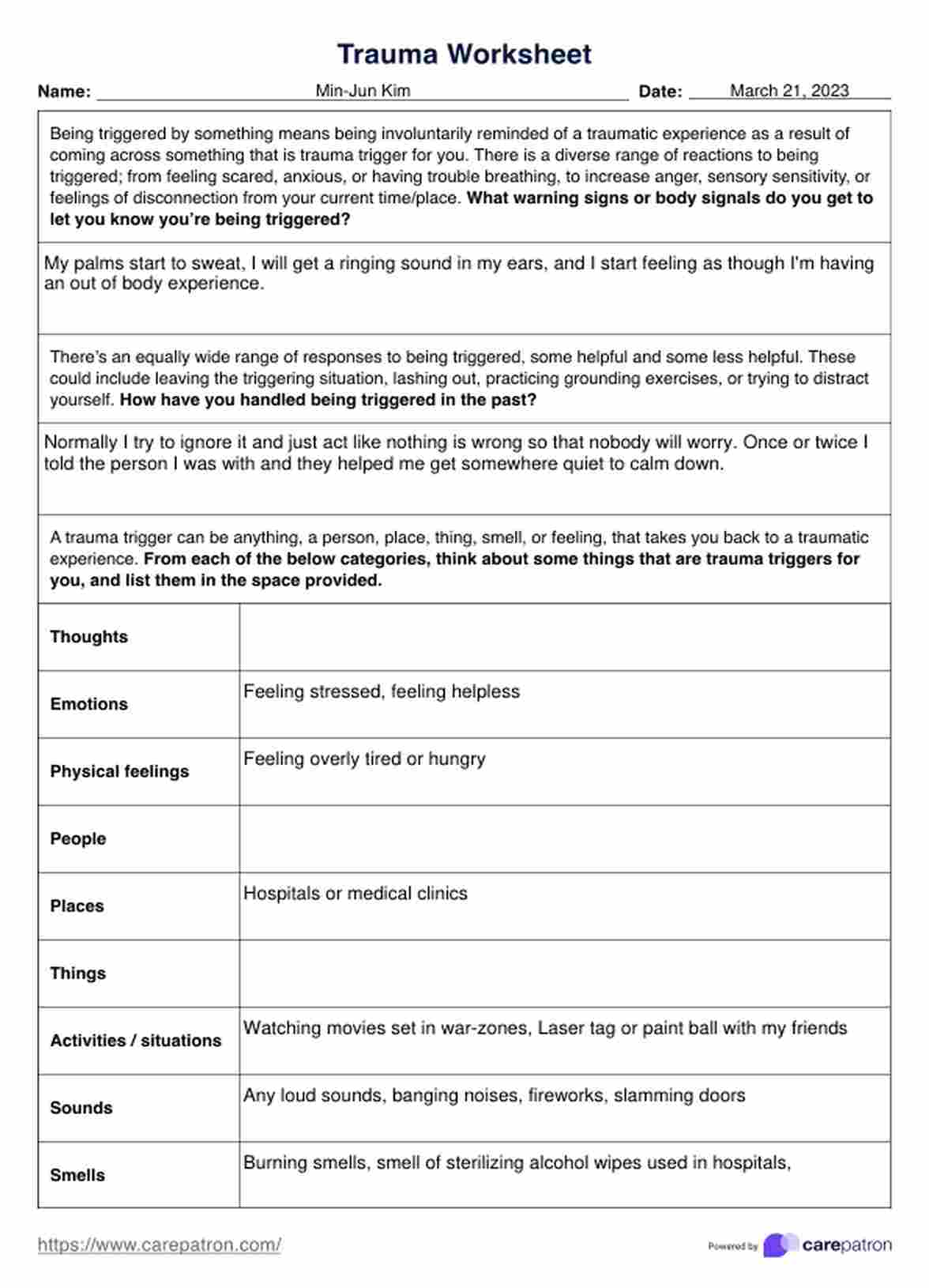

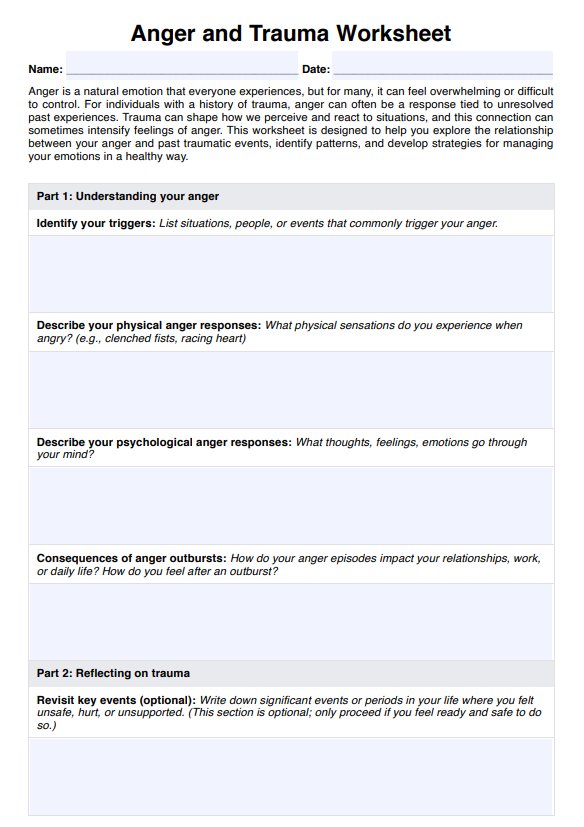














-template.jpg)





















































































